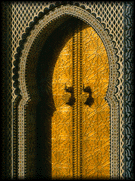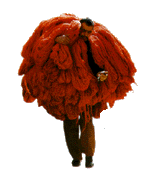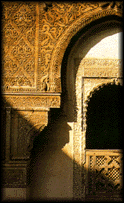
 |
Middle East International Services | Commerce | Almusaafer | Higher Education |
| Language Services | Arabic Course | Resource Center | ||
 Fez Sightseeing
Fez Sightseeing
Press here for:
[Tourist Attractions]
[Museums]
[Hotels]
Press to go back to:
[Morocco Sightseeing Index]
[Moroccan Index]
To leave Morocco press:
[Country Search]
[Home Page]

Fez...
The intellectual capital, the craft work capital, the most imperial of all cities in Morocco and pearl of the Arab world, Fez is where the senses are given truly royal treatment.
This is where, as in Florence or Athens, you come in search of a whole civilization's treasures. Where the inexhaustible riches and profusion of a generously varied life blended with the sensual play of sun, color and flavor ensure that, here in Fez, you will find what you like most.
.

Here,there is no distinguishable borderline between pleasures that are of the mind and pleasures that are of the senses.
With the refinements of its palaces and museums and the luxuriance of its life, the unique Fez extends an invitation to visit it again and again.
Fez, The Most Imperia city
Of Them AllThe first capital of the kingdom in 808 under Idriss II, and then twice again, in the XIIIth century under the Merinides and in the XIXth century during the reign of Moulay Abdallah, Fez, the spiritual and cultural center of Morocco, is a city of multiple facets and quite unmatched in its splendor.Apart from the European town built after the First World War, there are two distinctly different areas of the city; Fez el Jedid ("the new") and Fez el Bali ("the old")
In Fez el Bali there are also two distinctly different districts.
In 818, several hundred Moslem families settled on the right bank of Wadi Fez, after having been expelled from Andalusia by the Christian armies. Seven years later, 300 Kerouan families established their homes on the opposite bank. The Andalousian Arabs brought with them their art and the experience of a civilization at the very peak of its glory. The Andalousian quarter is particularly impressive for its splendor and its profusion with one another, each with their sculpted woodwork, engraved bronze, polychrome carving, moucharabies, columns and sculpted plaster work.
When the Merinides came to power in the XIIIth century, they found Fez el Bali too small to contain the palaces that would be worthy of their magnificence. So they built them outside the city walls, adding gardens, mosques, Koranic schools and souks...
Which is how new Fez, or Fez el Jedid, was born.
The great Rue des Merinides and the Place des Alaouites make up the nerve center of this district. Dar el-Makhzen, the royal palace with the golden doors, opens onto the esplanade where begins the Rue Bou Khessissat with its houses of wood and wrought iron.
A few hundred meters away, the Jewish cemetery with its immaculate tombs stands as a haven of silence in the midst of the Mellah, the Jewish quarter.
To the south of Fez el Jedid stretches the modern city with its many broad avenues, and in particular the playing through the leaves overhead onto the ornamentals pools beneath.

A walk around Fez is so enchanting that it is certainly worth enjoying at different times of the day; at dawn, as the light climbs up the flanks of the hills, and at dusk, when the sun floods the cascades of roofs and cupolas with ochre-red light. An Imperial vision, engraved forever on the memory as an open invitation to return.
Looking out over the gentle slope of its roofs from the Merinides tomb, who could ever think there was so much going on down there in Fez?The best way to experience it is to make your way through the streets at a leisurely pace, following the flow of bustling activity as the fancy takes you.
Soft, fluffy wool, a glass of scalding tea, the smell of the herbs and spices in the spice merchants' souk, the dazzling colored hanks of yarn suspended in the dyers' souk, the succulent kebabs and honey cakes, the ceaseless sound of voices everywhere and the dull thud of craftsmen's tools coming from all quarters... Wandering through this labyrinth of narrow streets, staircases, passages, arches and cul de sacs, is to become a part of the fascinating authenticity of a world that has been jealously preserved.